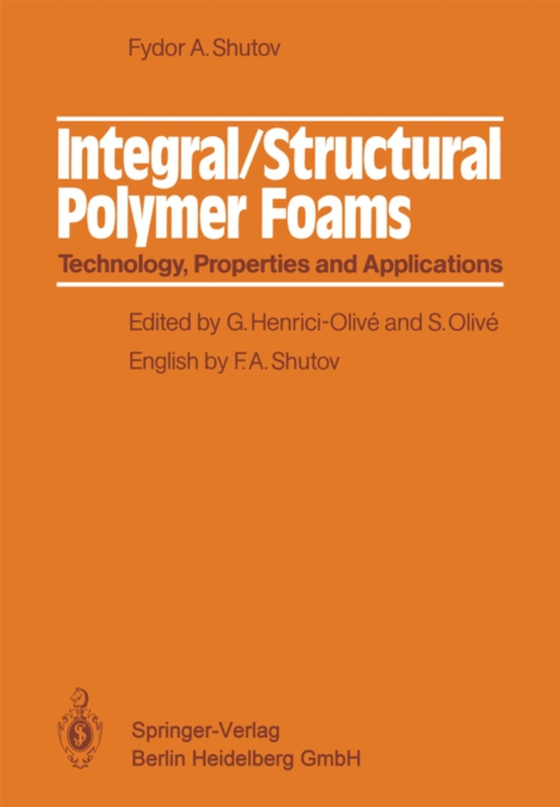
Integral/Structural Polymer Foams e-bog
436,85 DKK
(inkl. moms 546,06 DKK)
Integral, or structural, foams are one of the most remarkable materials that have been developed over the last fifteen years. As with all rapidly growing fields, the terminology seems to have grown even faster. Thus there are two names for the material structure itself. In the United States and in Japan the term for these plastics is Structural Foams, whereas in Europe and the USSR the term use...
E-bog
436,85 DKK
Forlag
Springer
Udgivet
14 marts 2013
Genrer
TGMP
Sprog
English
Format
pdf
Beskyttelse
LCP
ISBN
9783662024867
Integral, or structural, foams are one of the most remarkable materials that have been developed over the last fifteen years. As with all rapidly growing fields, the terminology seems to have grown even faster. Thus there are two names for the material structure itself. In the United States and in Japan the term for these plastics is Structural Foams, whereas in Europe and the USSR the term used is usually Integral Foams. We have adhered to the European term in the text and hope our colleagues will bear with us. Integral foams have a specific structure: a cellular core that gradually turns into a solid skin. The skin gives the part its form and stiffness, while the cellular core contributes to the very high strength-to-weight values of the material. These are higher than those of some unfoamed plastics and metals. The sandwich-like structure with its unique mechanical properties was prompted by nature. Wood and bone are strong and light-weight natural materials having a cellular structure. Since the sandwich-like structure of the integral foams resembles that of natural wood, the foams are often referred to as artifical wood or plastic wood, thereby emphasizing not only the formal structural similarity of these materials, but also one of the main functional applications of integral foams - replacement of wooden articles in various fields of engineering and construction.
 Dansk
Dansk

